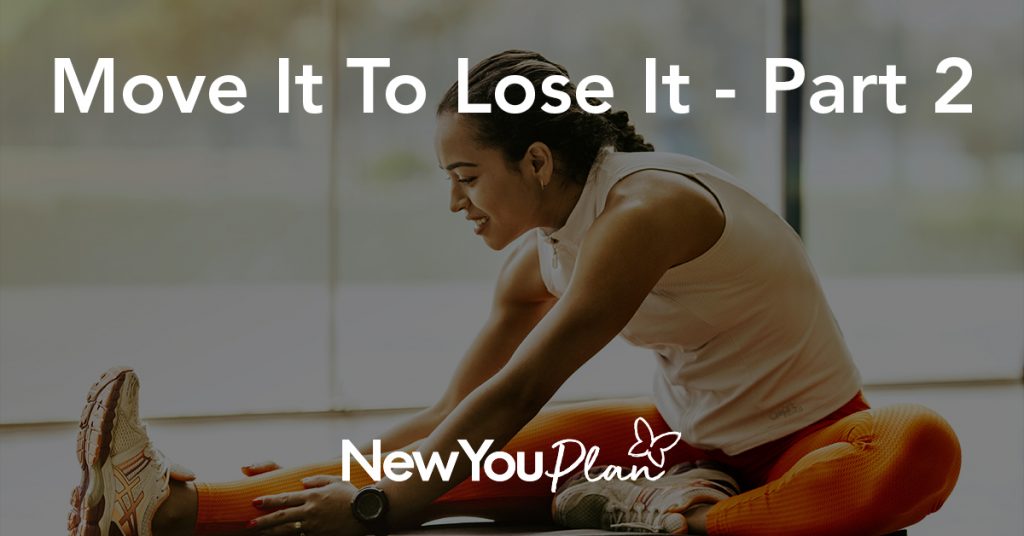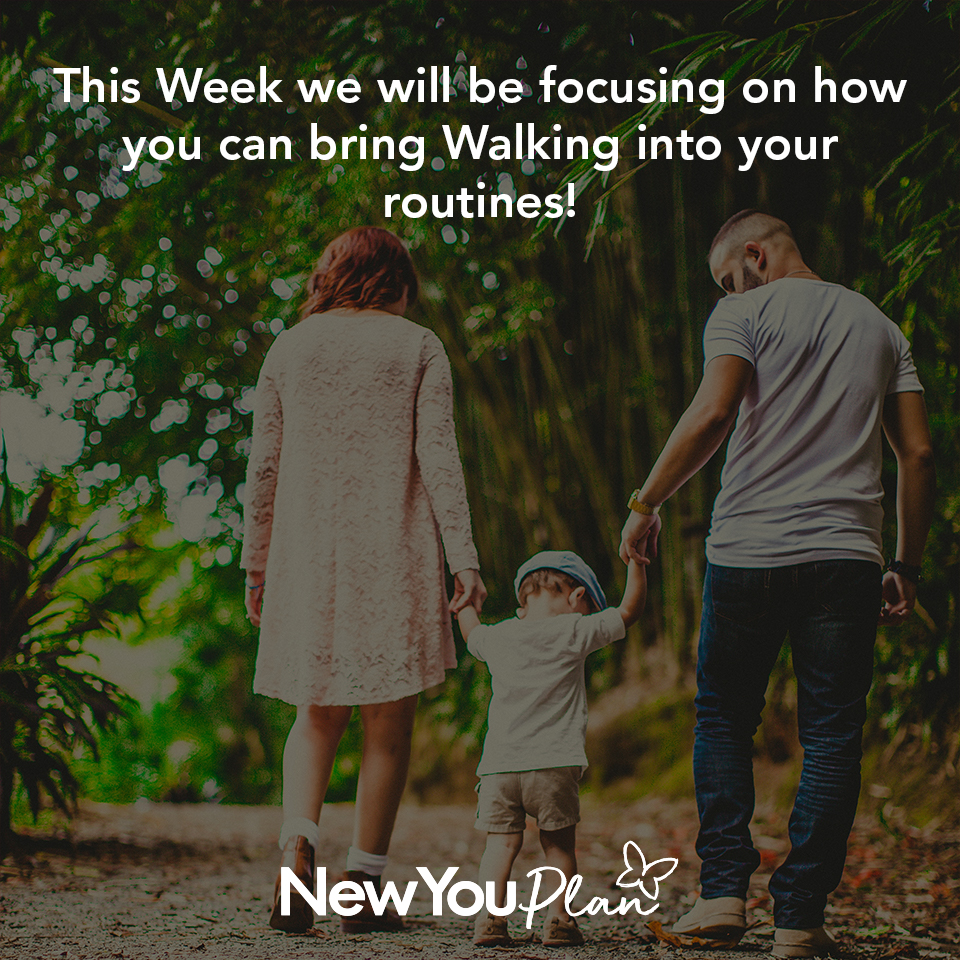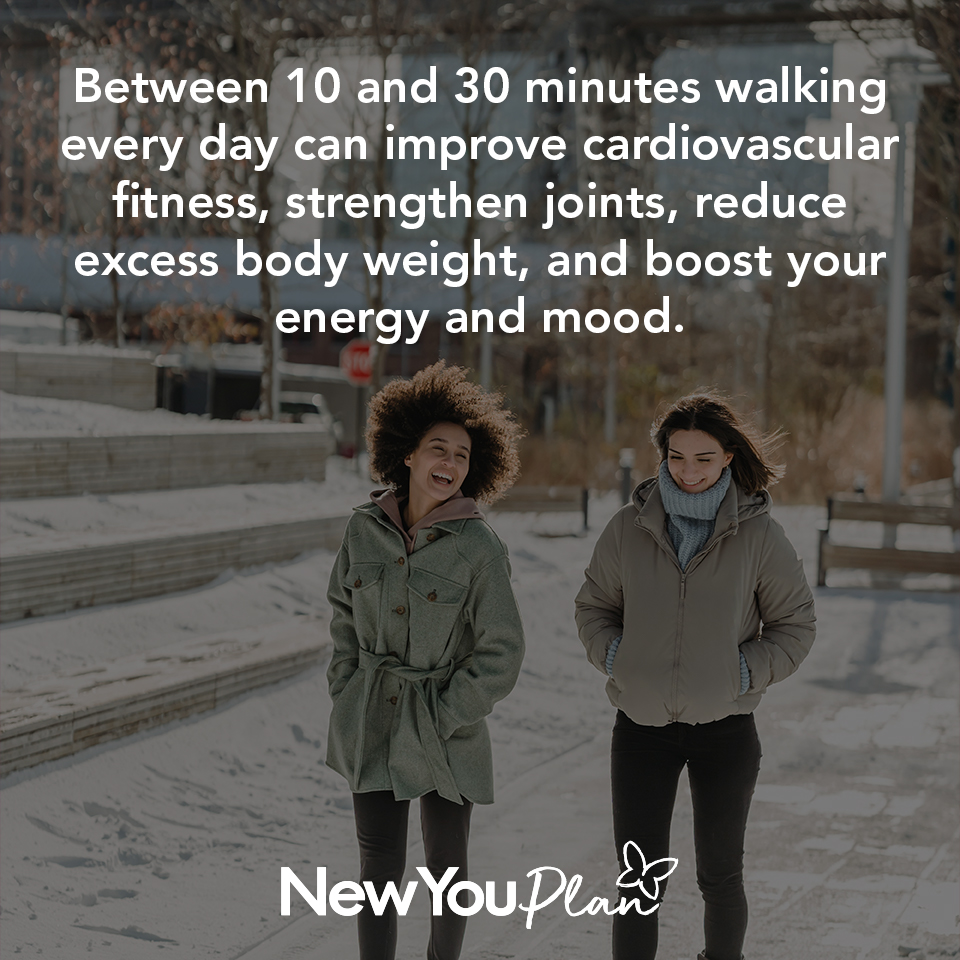
Move It To Lose It – Part 2
When you feel unhappy with yourself and your weight, the last thing you feel like doing is getting out and about, right? Especially at this time of year. It can feel comforting to hibernate in the warmth of your house. But although it may feel good at the time, you are doing your body a great disservice if lounging about becomes a daily routine or habit.
The less you move your body about, the fewer calories you are burning and the harder it becomes to do a healthy amount of exercise. Being sedentary will eventually stop your weight loss and make it impossible to maintain.
So what can you do?
Well, here and New You HQ we recommend taking on something that is free and relatively easy if you are able-bodied.
Walking! It has so many health benefits and can be simple to fit into your daily routine.
Walking is a great way to start moving it to lose it, so as part of our focus on exercise we’re going to tell you everything you need to know.
So, walking?
It may seem like we’re telling you to do something that you do all the time when just generally moving about your house or work! But we promise you we’re not! In this case, we’re talking in addition to what you already do. It’s the addition that will make all the difference.
Commonly, walking is overlooked as a way to increase your activity, become healthier and lose weight because people still think of exercise as something as a gruelling chore that you have to hate to get any sort of result. But that’s really not the case! Just a daily 10-minute brisk walk can help you to build stamina, make your heart healthier and burn off excess calories.
In fact, a study of inactive women in 2007 found that 75 minutes per week of low-level exercise such as walking, significantly improved their fitness levels compared to the non-exercising group.
All you need to make a start is a comfortable and supportive pair of shoes or trainers and maybe a bottle of water if you’re walking for more than half an hour.

So what are the health benefits of walking?
There are so many benefits, and we’re not writing an essay here, so we’ve selected to tell you about the ones we feel would be the most important to you.
It improves your mood.
We thought we would put this at the top of the list, especially with SAD being so common at this time of year. Walking is great for your mental health, especially if it’s out in the daylight and fresh air.
Studies have shown that walking outside can help reduce negativity, anxiety and depression. That’s in addition to boosting your self-esteem and reducing any symptoms you experience of social withdrawal.
To feel the full benefits, it’s recommended that you aim to walk briskly for 30 minutes 3 days a week. You can of course break that 30 minutes into 3×10 minute sessions.
It burns calories
This is fantastic news when it comes to your transformation! Because we all know that burning off additional calories will help you to lose or maintain your weight.
How many calories you burn depends on how fast you walk, what distance you walk, whether it’s on a flat surface or hill and your existing weight.
It eases joint pain
If you suffer from joint pain, it can be hard to see how moving your joints will achieve anything other than more pain. But that couldn’t be further from what actually happens.
When you walk your body lubricates and strengthens your muscles and joints to protect them. Walking can actually reduce the pain suffered due to arthritis and stiffness.
It boosts your energy
I’m sure you could definitely get behind this one! Who doesn’t want more energy? Did you know that going for a walk when you are tired can be more effective and boost your energy more than a cup of coffee?!
From a scientific perspective, when you walk, you increase oxygen flow, and all the happy hormones such as cortisol, norepinephrine and epinephrine. All of these help to raise your energy levels.
It tones your legs
Most of you will hide your legs away in the winter, so why not secretly work on them over the colder months for a big reveal in the summer?
Walking will strengthen the muscles in your legs. To maximise that strength try walking up hills, inclines or stairs.
It boosts immune function
Walking is ideal for the winter season with all the colds and flu flying about.
One study showed that adults who have walked 30-45 minutes a day had 43% fewer upper respiratory tract infections and sick days overall.
The results also showed fewer symptoms when they did get sick compared to adults who were sedentary.

It can help lower your blood sugar
If you are a type 2 diabetic or pre type 2 diabetic taking a short walk after a meal can help to lower your blood sugar.
Studies have shown that just a 15 minutes walk after meal times improved blood sugar levels more than a longer walk at any other time.
It will be easier to make walking a new habit if you attach it to a meal too.
It strengthens the heart
It only takes 30 minutes of walking a day, five days a week to reduce your risk of heart disease by 19%.
The longer you walk for, the more you can potentially reduce your risk.
It’s great for creative thinking
Great news for the creative’s amongst you. Walking can help you to think creatively by clearing your head.
There have been studies on this that have shown that people were more likely to think of new ideas whilst walking compared to sitting, even more so when walking outside.
Walking really is a good all-rounder when it comes to health and your transformation, but how do you know if you’re doing it right? How do you know if what you’re doing is making a difference? What if you are starting from scratch?
All very valid questions and because we wholeheartedly recommend walking we want to make sure you know everything you need to, to make a positive start.
What if you’re not very active?
If you are able to walk but not very active then start off slow and short. Set yourself mini goals and increase your distance gradually.
If your joints are a problem, just remember that walking can help but take it gently and at your own pace. Always seek your GP’s advice before you take on any form of exercise.
How do you know if you’re walking fast enough?
As a rule of thumb, a brisk walk is roughly 3 miles an hour, which is a little faster than a stroll.
Try and sing when you’re walking – if you can’t but you can talk then congrats – you’re walking briskly!
How do you stay motivated?
Make it a habit by attaching it to something already in your daily routine or switching up what you already do, such as:
- Using the stairs instead of the lift.
- Walking part of your journey to work.
- Walking to the shops.
- Going for a walk after a meal.
- Walking the kids to school.
- Doing a regular walk with a friend.
- Get off the bus one stop earlier.
- Walk the dog or your neighbour’s dog.
Other ways to stay motivated are:
Listen to music or a podcast whilst walking.
Mix it up and add variety to your walks. Don’t always take the same path.
Join a walking group. It’s a great way to make new friends and chatting whilst walking will make the time fly by.
Wearing a pedometer while walking so you can track your progress.
So as you can see, walking offers so many health benefits to people of any fitness level and is a perfect addition to your transformation journey.
Between 10 and 30 minutes, every day can improve cardiovascular fitness, strengthen joints, reduce excess body weight, and boost your energy and mood. Unlike many other types of exercise, walking is free and you don’t need any special training or equipment.
Walking is low impact, yet weight-bearing (you carry your own body weight) and can be done at any time and at your own pace.
All in all, building walking into your daily lifestyle can be one of the most effective ways to help with your weight loss and maintain your transformation. We recommend that you give it a try.
Get moving and give it a go and let us know how you got on.
Watch this space for the third instalment of Move It To Lose It!





